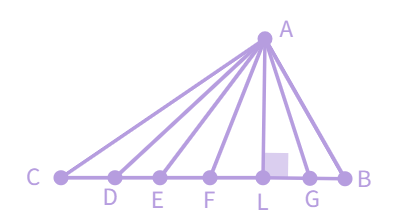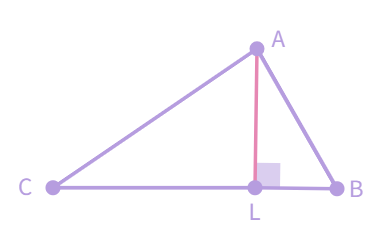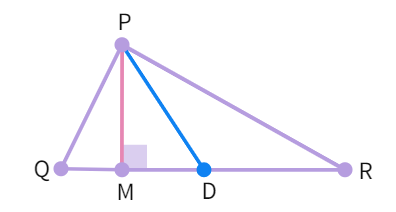Altitudes of a Triangle
When you place a triangular object or a cutout on a table, its 'height' can be determined by measuring from a vertex to the opposite side, known as the base. However, it's important to identify the correct line segment that represents this height.

The altitude, or height, of a triangle is not just any line segment from a vertex to the base. It is specifically the line that extends perpendicularly from a vertex to the opposite side.
In other words, it forms a right angle with the base. Identify the altitude in the below figure.(AL)


This perpendicular line segment, AL in diagrams, is what is known as an altitude.
An altitude can be drawn from each vertex of the triangle, and it represents the
An altitude has one end point at a vertex of the triangle and the other on the line containing the opposite side.Through each vertex, an altitude can be drawn.
Pay close attention to how the lengths and positions of the altitudes change as you move vertex c. Move it all around, side to side and up and down. This helps you to understand the relationship between the triangle's shape and its altitudes.
An altitude has one end point at a vertex of the triangle and the other on the line containing the opposite side.Through each vertex, an altitude can be drawn.
The height is given by the line segment that starts from P, comes straight down to QR, and is perpendicular to QR.
This line segment PM is an altitude of the triangle. Conversely, an altitude is also the shortest distance between a vertex and the opposite side.
Below we can see that - any triangle has a total of three altitudes.
- Answer as Yes / No:
- Can an altitude be outside (exterior) a triangle?
- Can a median be outside (exterior) a triangle?
- Can an altitude be outside (exterior) a triangle?
- In ∆ PQR, D is the mid-point of QR :
PM is
PD is
Is QM = MR?
D is the mid-point not

